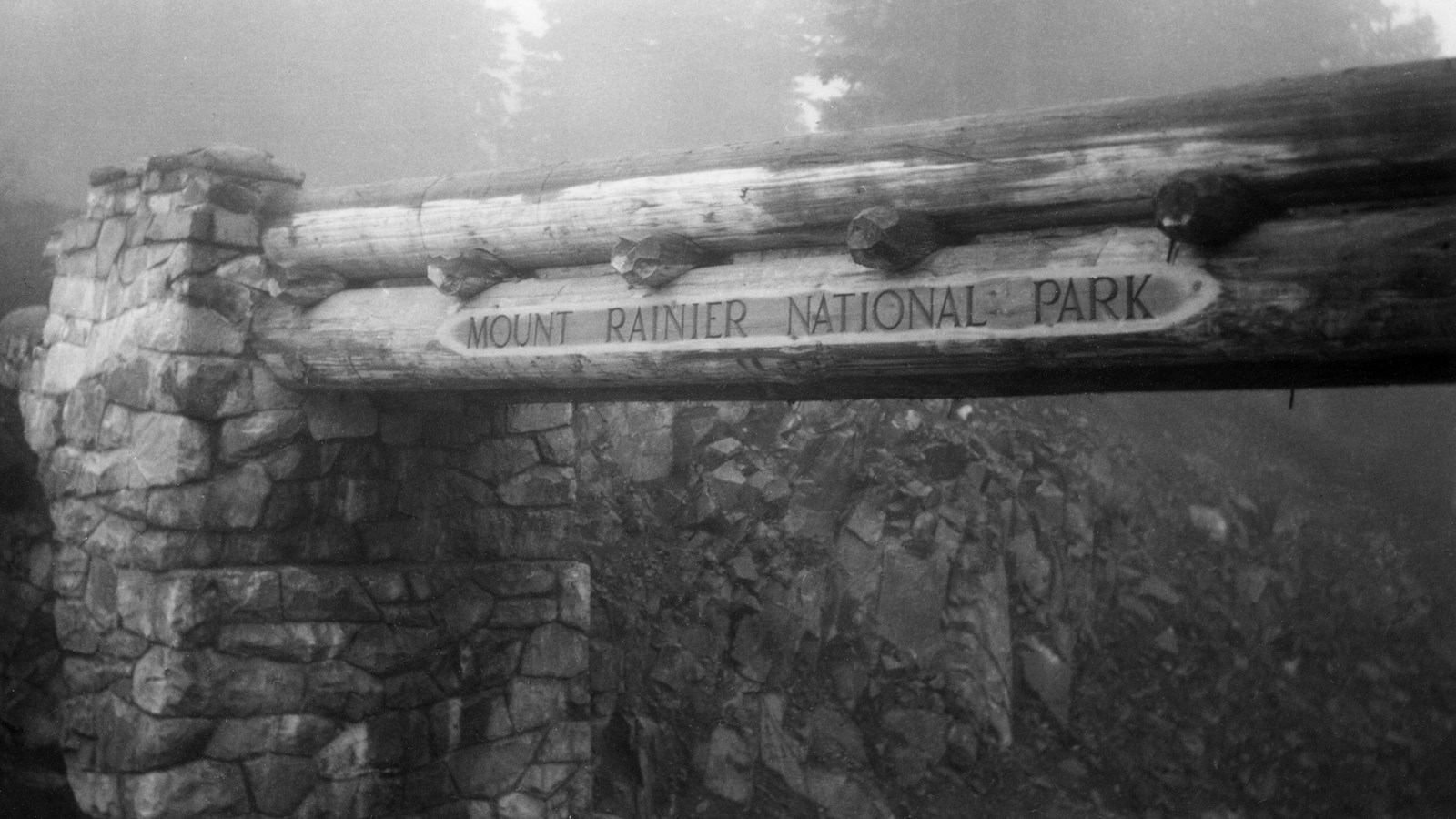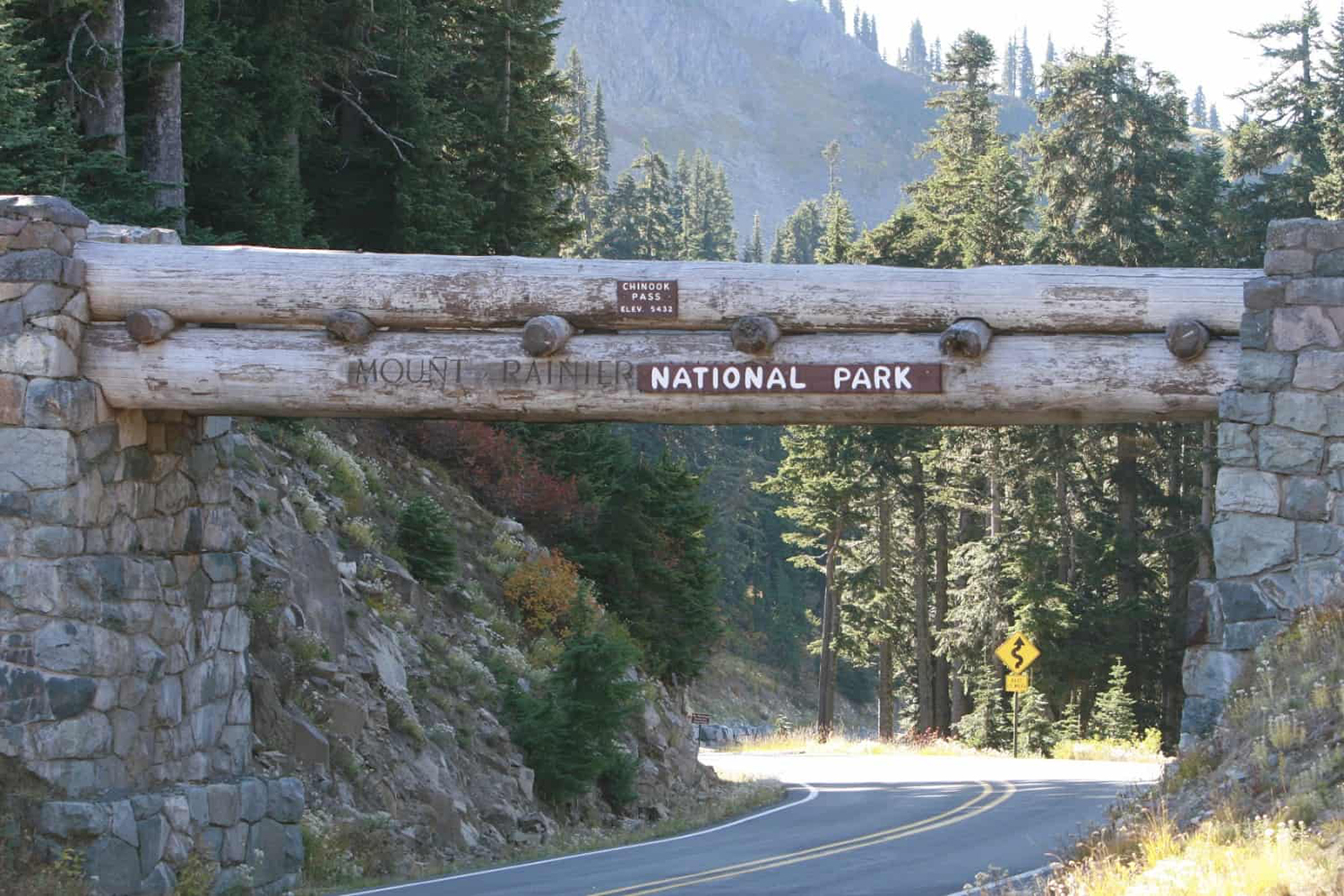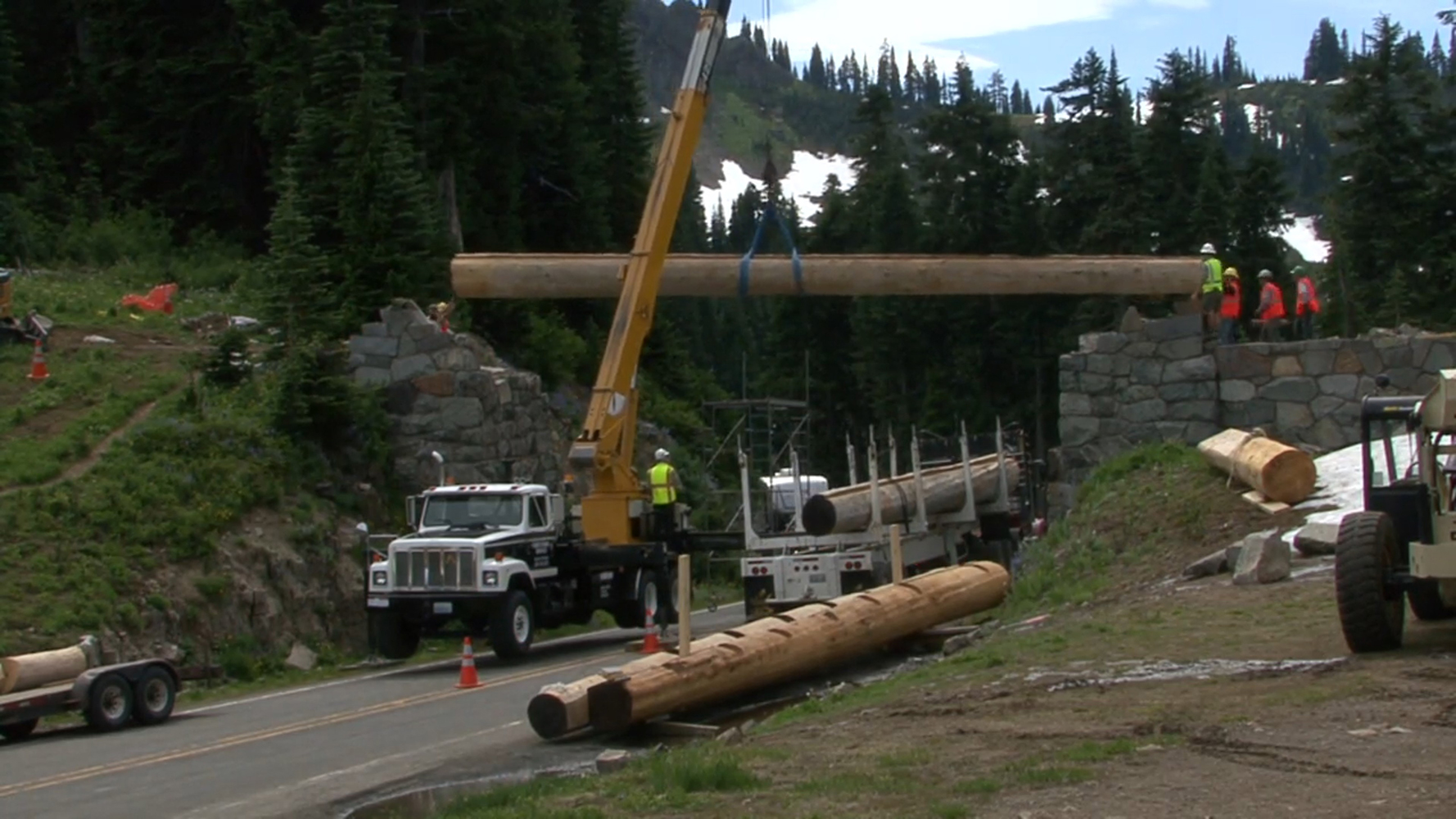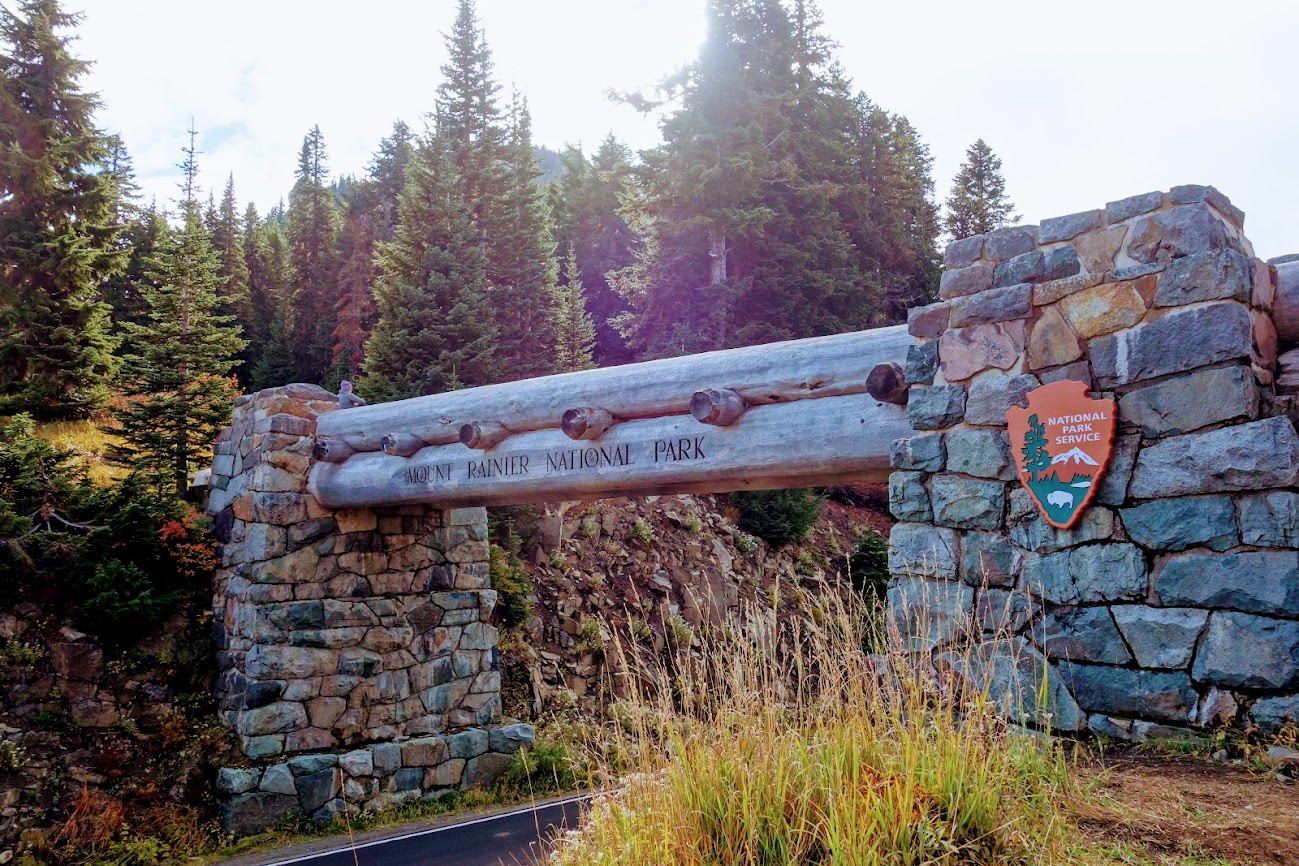(mm 2326.7) You probably experienced heavy day hiker traffic for at least the last mile and a half as you approached the very popular Chinook Pass. But never the less you made it to the 5,432 ft. pass. This is the last time you will touch Mount Rainier National Park going north on the PCT.
Road history
In brief, the road over Chinook Pass was built because the planned State Route 168 over Naches Pass (22.8 trail miles north of here) was deemed too expensive due to the need of tunnels. Chinook would need no tunnels, but would need to be closed in the winter due to avalanche danger.
Work on the road from Yakima (east) to Chinook Pass began May 1914. Due to washouts that winter, dwindling mining activity in the area, and the threat of U.S. involvement in World War I, work on the pass highway was abandoned. The project wasn't revived until the fall of 1921 using manual and horse-powered labor. It wasn't until 1924 that an Army tractor was brought in to speed the work.
Construction on the road from the west was also far behind schedule. The west and east portions of the highway finally met in the summer of 1931. A celebration was arranged at Tipsoo Lake and an estimated 7,000 cars made the trip, with another 1,000 turned back for lack of parking space.
Snow plowing
Between 1940 and 1950 the state kept the west side of Chinook Pass plowed for skiers, but now they stop plowing Highway 410 twelve road miles north of here at the turn off to Crystal Mountain Ski Resort, which is 2,650 ft. lower.
The date the road is open depends on how long it takes to remove the snow (usually in late May) and when the first snow comes. For 2024 Chinook Pass road opened May 31st and closed for the winter on October 31st when the snow depth exceeded 4".
The Arch
The Chinook Pass "Arch" was built in 1936 by the Civilian Conversation Corps. It is a dual-function structure serving as both a pedestrian bridge for the PCT and as a park boundary marker for vehicles. It also enforces the 13' height limit on vehicles.
Arch replacement
The bridge was taken down in the fall of 2010 and the pieces taken to where carpenters could replicate them side by side. The new arch was completed fall 2012. The log stringers are old growth western red cedar logs that together weigh about 30,000 lbs.
The original arch:

The arch needing repair:

Replacing the arch:

The new arch, less than 2 months old (Photo credit: Jaunting Jan):

Video of the new arch being placed.